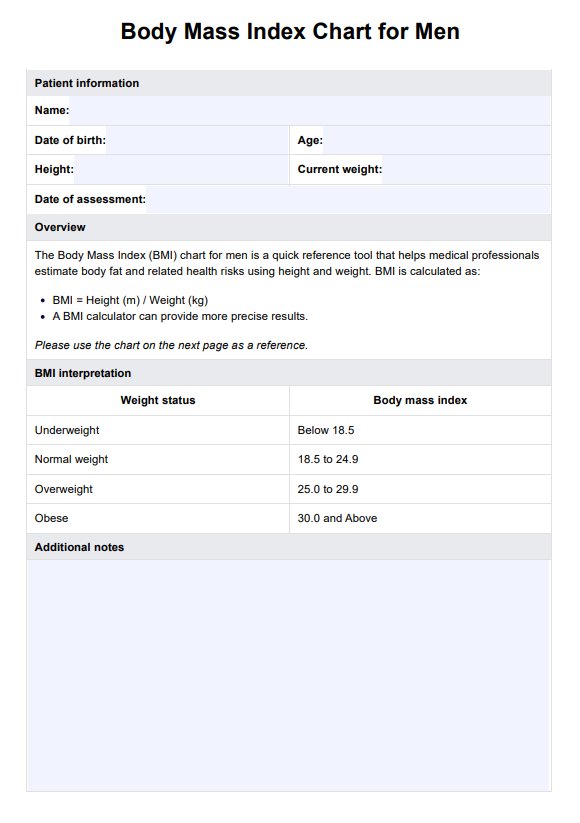A healthy BMI for a man falls between 18.5 and 24.9, indicating a normal weight range associated with lower health risks. Values outside this range may signal potential risk factors for chronic conditions like cardiovascular disease or adult obesity.

BMI Chart Men
Use Carepatron's free PDF BMI Chart for Men to support clinical assessments, patient weight management, and evaluation.
BMI Chart Men Template
Commonly asked questions
For a 5'10" male, a healthy BMI should range from 18.5 to 24.9, which corresponds to a weight of approximately 129 to 174 pounds. Staying within this range helps minimize health risks related to excess weight or low body fat levels.
The BMI ranges for a 70-year-old man are the same as for younger adults, with a healthy BMI between 18.5 and 24.9. However, healthcare providers should also consider body composition and age-related muscle loss when interpreting results.
EHR and practice management software
Get started for free
*No credit card required
Free
$0/usd
Unlimited clients
Telehealth
1GB of storage
Client portal text
Automated billing and online payments











